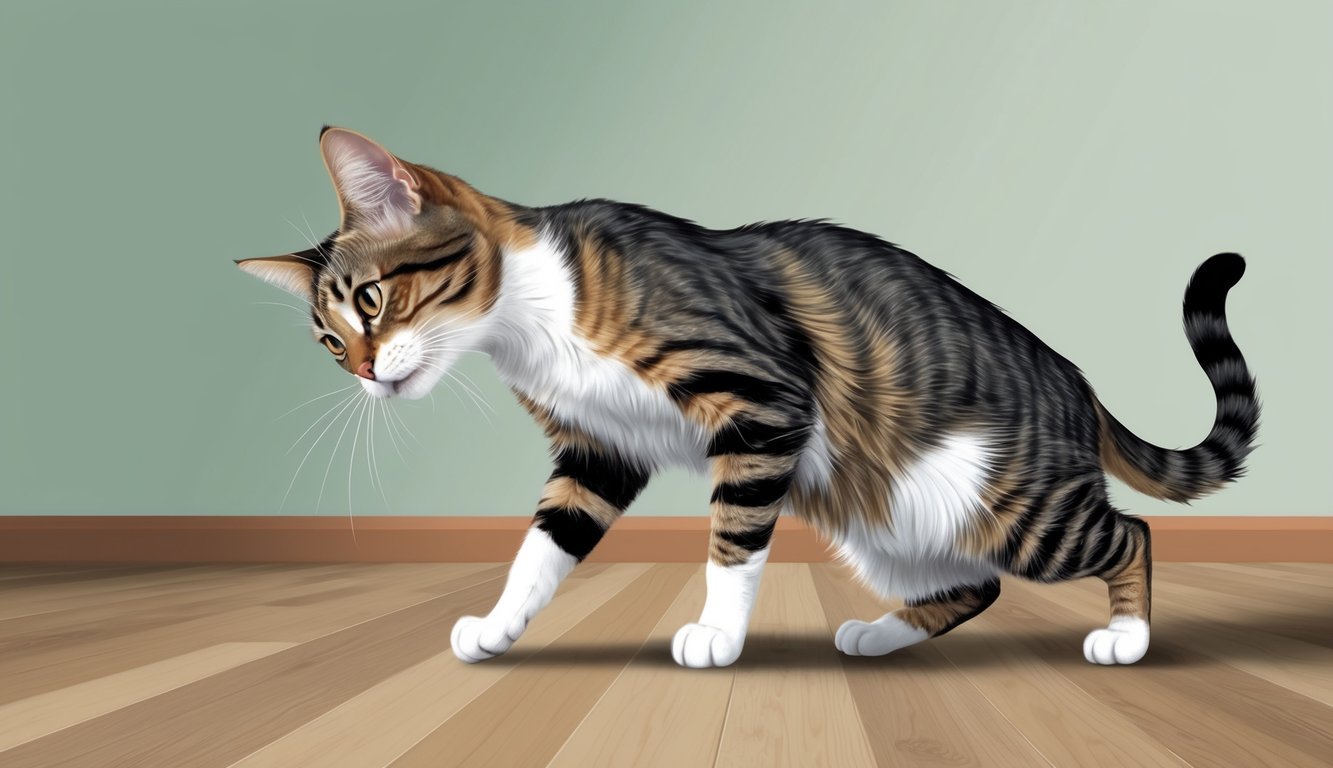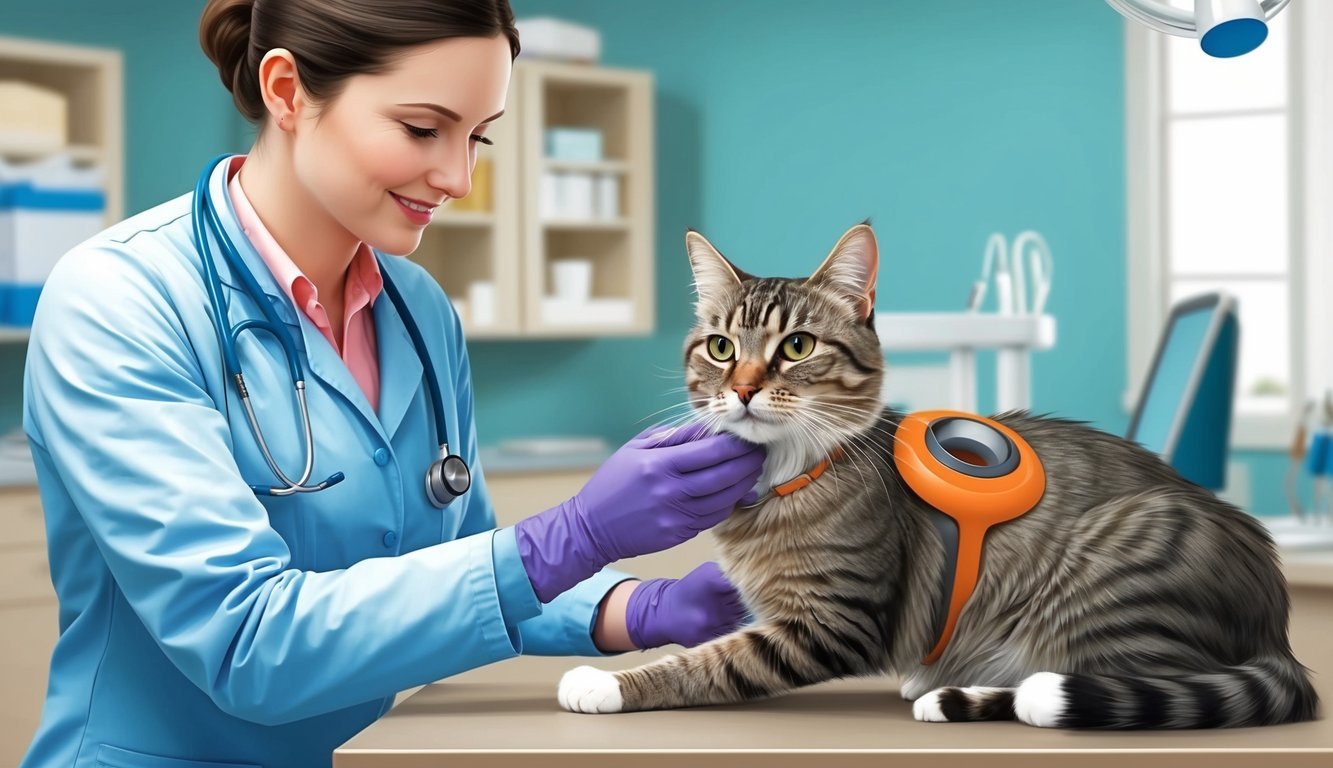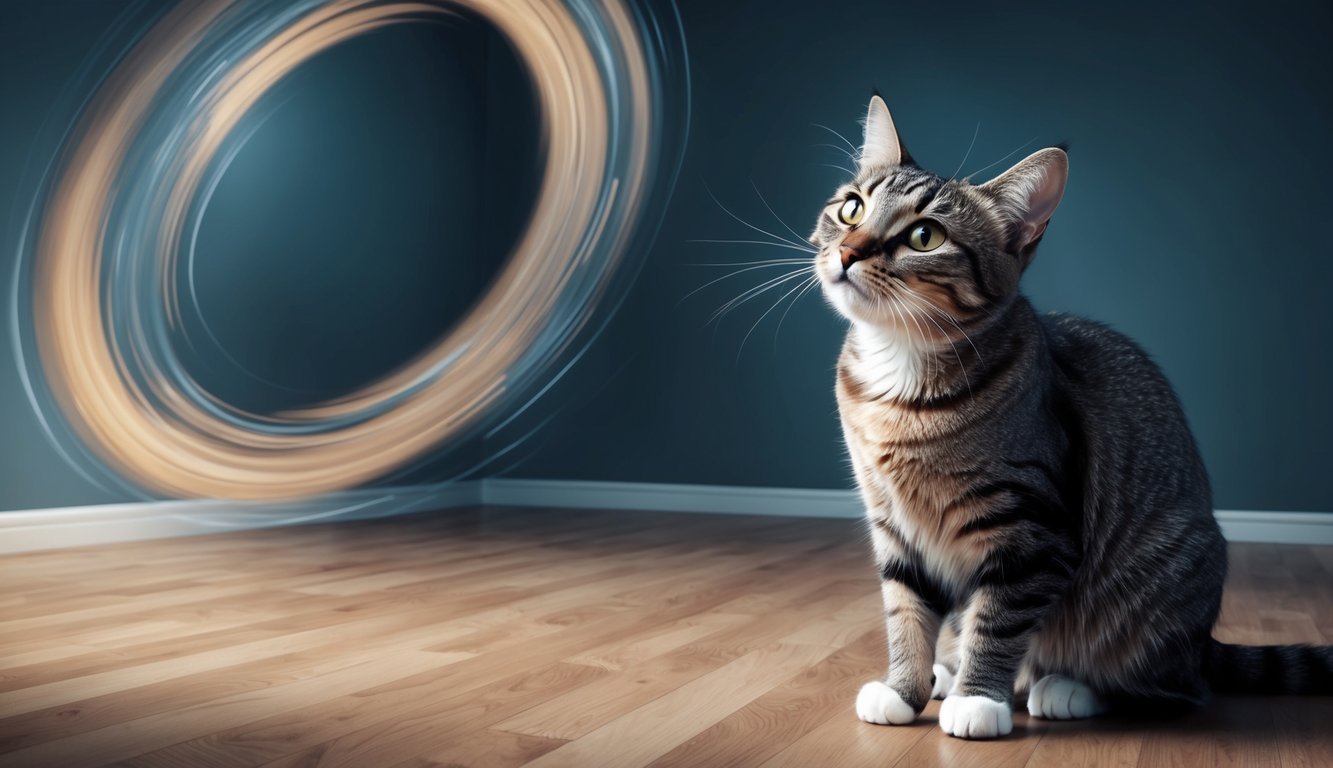Vestibular disease in cats can be alarming for pet owners as it affects their feline friend’s ability to maintain balance and coordination.
It often presents suddenly, causing confusion and distress, which can be a frightening experience for both you and your cat.
Recognizing the symptoms early can make a significant difference in treatment and recovery.
Common signs include stumbling, falling, or head tilting, which can be mistaken for other health issues.
Determining the underlying cause is key, as it can stem from various factors, including infections or idiopathic origins.
By knowing what to look for and understanding how to best support your cat through this condition, you can help them regain their stability and quality of life.
Stay tuned as we explore the causes, symptoms, and effective treatment options available for vestibular disease in cats.
Key Takeaways
- Early recognition of symptoms is crucial for effective treatment.
- Understanding the causes can lead to better management of the condition.
- Supportive care can significantly enhance your cat’s recovery and comfort.
Understanding Vestibular Disease
Vestibular disease affects the balance and coordination of cats, often presenting suddenly and requiring prompt attention.
The vestibular system itself plays a crucial role in maintaining equilibrium, and understanding its anatomy and types of vestibular disease can help you recognize and address issues more effectively.
Anatomy of the Vestibular System
The vestibular system is located within the inner ear and consists of several fluid-filled canals and chambers.
These structures work together to detect changes in head position and movement.
They contain specialized nerve cells that send signals to the brain about your cat’s orientation.
When the fluid within these canals shifts, it stimulates these receptors.
This information helps your cat maintain balance and coordinate movements.
Any disruption in this system can lead to symptoms such as head tilting, loss of balance, and incoordination.
Types of Vestibular Disease
Vestibular disease can be categorized into different types based on its origin. Peripheral vestibular disease is often idiopathic, meaning the exact cause is unknown, but it may arise from infections or inflammation.
Common signs include dizziness and abnormal eye movements.
In contrast, central vestibular disease involves issues in the brain or central nervous system.
Causes can range from tumors to trauma.
Lastly, congenital vestibular disease is present at birth, affecting certain breeds more frequently.
Identifying the type of vestibular disease is essential for effective treatment.
Symptoms and Diagnosis
Identifying vestibular disease in your cat can be crucial for effective treatment.
You may notice several specific symptoms and may need to utilize advanced diagnostic tools for proper evaluation.
Recognizing the Signs of Vestibular Disease
The symptoms of vestibular disease can appear suddenly and often include several distinctive signs.
Common symptoms to watch for are:
- Head Tilt: Your cat may hold its head at an unusual angle.
- Nystagmus: This involuntary eye movement can indicate a problem in the vestibular system.
- Ataxia: Look for signs of incoordination; your cat might stumble or appear unsteady while walking.
- Falling or Walking in Circles: Cats may fall to one side or struggle to walk straight.
- Vomiting or Nausea: These can accompany balance issues, as the vestibular apparatus is closely linked to the sense of balance.
If you observe these symptoms, it’s important to consult your veterinarian promptly for a thorough evaluation.
Advanced Diagnostic Tools
To confirm a diagnosis, veterinarians may utilize several advanced diagnostic tools.
- MRI: This imaging modality helps visualize the brain and inner ear structures, identifying potential tumors or lesions.
- Cerebrospinal Fluid Analysis: By analyzing the fluid surrounding the brain and spinal cord, vets can detect infections or inflammatory diseases.
A hands-on veterinary examination is essential in conjunction with these tools.
Your veterinarian will assess your cat’s symptoms, offering a comprehensive approach to determine the underlying cause of the vestibular disease and recommending appropriate treatment.
Causes of Vestibular Disorders

Vestibular disorders in cats can arise from a variety of sources.
Understanding the underlying causes is essential for effective treatment.
The main contributors include infectious and inflammatory conditions, as well as non-infectious diseases and trauma.
Infectious and Inflammatory Conditions
Infectious diseases are a significant factor in vestibular disorders. Ear infections like otitis media and otitis interna can disrupt the vestibular system.
Bacterial infections often lead to inflammation and may require antibiotics for treatment.
Feline infectious peritonitis (FIP) is another serious condition that could impact balance.
It results from a viral infection and can affect various organs. Inflammatory diseases such as meningitis and encephalitis are also culprits.
They can inflame the brain and surrounding areas, resulting in vestibular symptoms.
Additionally, nasopharyngeal polyps may contribute to these issues.
These growths can lead to ear problems or infections, further complicating your cat’s health.
Non-Infectious Illnesses and Trauma
Non-infectious causes can include neoplasia, which refers to abnormal growths such as tumors.
Brain tumors or other forms of neoplasia can disrupt normal vestibular function.
Thiamine deficiency is another factor, as low levels of this essential vitamin can lead to neurological problems.
Hypertension can also affect balance, though it’s less common.
Trauma plays a critical role as well.
Accidents or falls can lead to vestibular issues by causing damage to the head or inner ear.
Such injuries may require prompt veterinary attention to prevent long-term complications.
Approaches to Treatment

Managing vestibular disease in cats involves two main strategies: symptom management and addressing any underlying conditions.
A veterinarian plays a crucial role in developing a tailored treatment plan based on the specific needs of your cat.
Managing Symptoms
Your cat may experience symptoms like nausea, vomiting, or disorientation.
Treatment often focuses on reducing these effects to help them feel more comfortable.
-
Anti-Nausea Medications: These can be extremely helpful if your cat is experiencing vomiting. Medications such as ondansetron may be prescribed.
-
Anti-Inflammatory Medication: If inflammation is contributing to your cat’s condition, your veterinarian might recommend steroids or other anti-inflammatory drugs.
-
Supportive Care: Keeping your cat in a safe environment is vital. This includes providing a quiet space and ensuring that food and water are easily accessible. If necessary, assisted feeding may be required.
Addressing Underlying Conditions
The approach to treating vestibular disease also depends on addressing any underlying health issues.
-
Thorough Diagnosis: Your veterinarian will first conduct a comprehensive examination to determine the root cause of the vestibular symptoms. This may include blood tests or imaging studies.
-
Targeted Treatment: If the cause is identified—like an ear infection or a tumor—specific treatments will be initiated. For example, antibiotics may be prescribed for infections.
-
Monitoring: Regular follow-ups are important to assess your cat’s response to treatment and adjust as needed.
Living with Vestibular Disease

Caring for a cat with vestibular disease can be challenging, but with the right approach, you can help your feline friend manage the condition effectively.
You’ll need to focus on supportive home care while also keeping an eye on their prognosis and quality of life.
Home Care and Management
Creating a safe environment for your cat is crucial. Remove hazards such as sharp objects and create a cozy resting area with soft bedding. Limit their space, using baby gates if necessary, to prevent falls.
Feeding may need adjustment.
Place bowls at an appropriate height and consider using a deep dish to make it easier for them to eat without spilling. Hydration is essential, so ensure water is always accessible.
Monitor their condition regularly.
Look for signs of improvement or any troubling symptoms like persistent vomiting or extreme lethargy.
Regular vet check-ups will help guide your home care.
Prognosis and Quality of Life
The prognosis for vestibular disease varies. Idiopathic vestibular syndrome often resolves spontaneously, leading to a good quality of life.
In older cats, geriatric vestibular disease may present more significant challenges but can still improve over time.
Cats with vestibular issues can adapt well.
They often learn to find their balance, making adjustments to their movements over time.
Regular assessment of their daily activities, like eating, grooming, and playing, can effectively indicate improvements.
Always consult your vet for guidance on medications or treatments that may enhance your cat’s quality of life.
Frequently Asked Questions

Vestibular disease in cats can raise many questions for pet owners.
Understanding its triggers, management, and treatment can help you provide the best care for your furry friend.
What triggers vestibular disease in our feline friends?
Vestibular disease can be triggered by various factors.
Common causes include inner ear infections, neurological disorders, and even trauma.
It’s also associated with certain conditions like feline infectious peritonitis (FIP) and other infections.
How can we manage vestibular disease in cats at home?
Managing vestibular disease at home involves creating a safe environment for your cat.
You can minimize obstacles, make their resting area comfortable, and ensure they have easy access to food and water.
Keeping their area quiet can also help reduce stress.
Is experiencing vestibular disease a painful ordeal for cats?
Generally, vestibular disease itself is not painful, but it can cause disorientation and distress.
Your cat might feel uneasy due to the loss of balance and coordination.
Monitoring their behavior closely can provide insights into their comfort levels.
What are the treatment options available for vestibular disease in cats?
Treatment for vestibular disease often depends on the underlying cause.
In many cases, supportive care is sufficient.
Medications may be used to manage symptoms, and your vet can provide specific recommendations based on your cat’s needs.
How long can a cat expect to show symptoms of vestibular disease?
The duration of symptoms varies from cat to cat.
Many cats might show improvement within a few days to weeks, while others could experience longer episodes.
Regular veterinary check-ups are essential to monitor progress and address any concerns.
Do cats affected by vestibular disease tend to sleep more than usual?
Yes, cats with vestibular disease may sleep more than usual.
Feeling unsteady can lead them to rest more often.
Providing a comfortable place for them to sleep can help ensure they get the rest they need.

